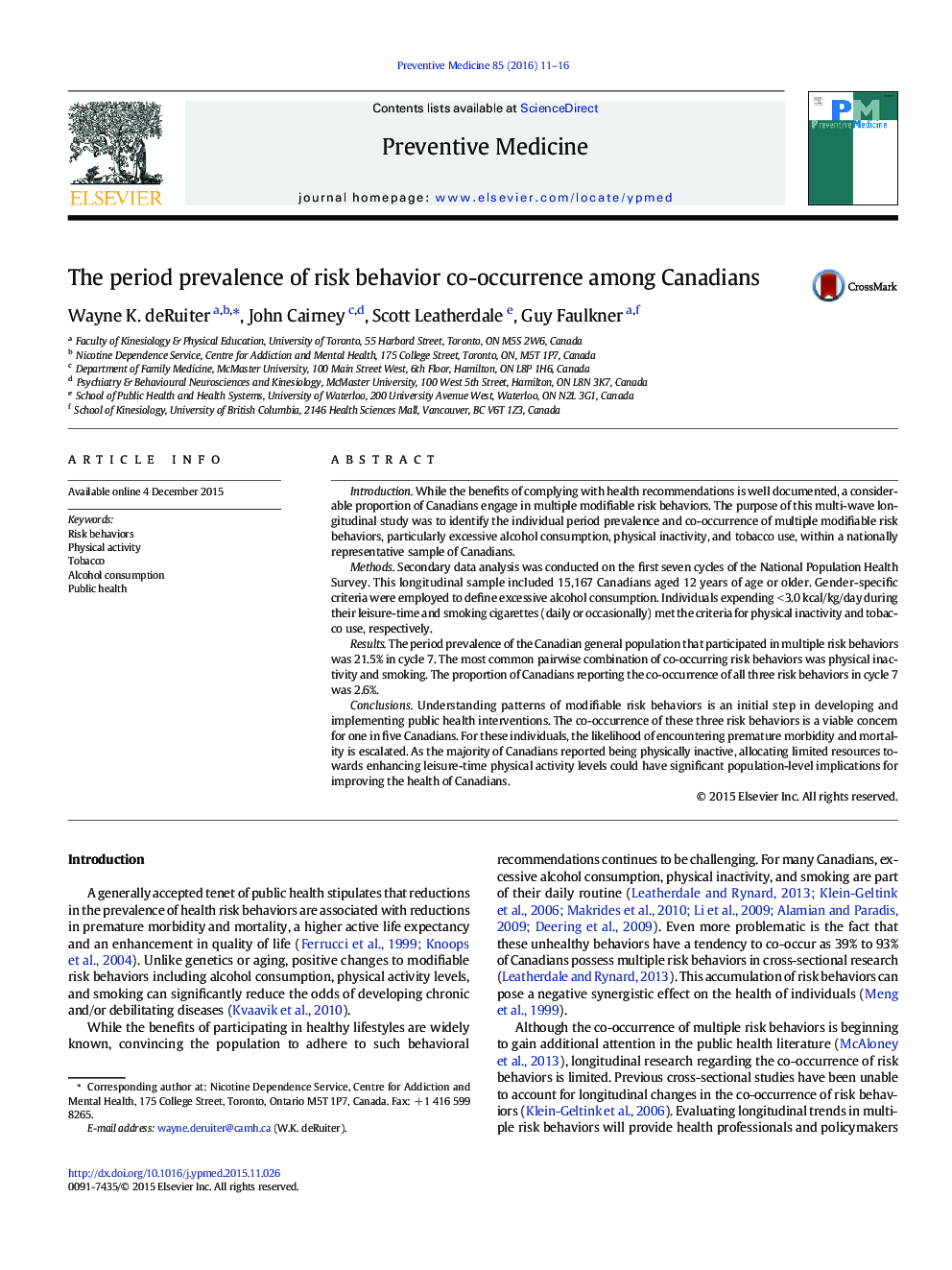| Article ID | Journal | Published Year | Pages | File Type |
|---|---|---|---|---|
| 3100320 | Preventive Medicine | 2016 | 6 Pages |
•A modest proportion of Canadians possess multiple risk behaviors.•Specific combinations of risk behaviors demonstrated an increasing trend.•Co-occurrence of other risk behaviors have declined over time.•Identifying patterns of risk behaviors is vital for public health interventions.
IntroductionWhile the benefits of complying with health recommendations is well documented, a considerable proportion of Canadians engage in multiple modifiable risk behaviors. The purpose of this multi-wave longitudinal study was to identify the individual period prevalence and co-occurrence of multiple modifiable risk behaviors, particularly excessive alcohol consumption, physical inactivity, and tobacco use, within a nationally representative sample of Canadians.MethodsSecondary data analysis was conducted on the first seven cycles of the National Population Health Survey. This longitudinal sample included 15,167 Canadians aged 12 years of age or older. Gender-specific criteria were employed to define excessive alcohol consumption. Individuals expending < 3.0 kcal/kg/day during their leisure-time and smoking cigarettes (daily or occasionally) met the criteria for physical inactivity and tobacco use, respectively.ResultsThe period prevalence of the Canadian general population that participated in multiple risk behaviors was 21.5% in cycle 7. The most common pairwise combination of co-occurring risk behaviors was physical inactivity and smoking. The proportion of Canadians reporting the co-occurrence of all three risk behaviors in cycle 7 was 2.6%.ConclusionsUnderstanding patterns of modifiable risk behaviors is an initial step in developing and implementing public health interventions. The co-occurrence of these three risk behaviors is a viable concern for one in five Canadians. For these individuals, the likelihood of encountering premature morbidity and mortality is escalated. As the majority of Canadians reported being physically inactive, allocating limited resources towards enhancing leisure-time physical activity levels could have significant population-level implications for improving the health of Canadians.
